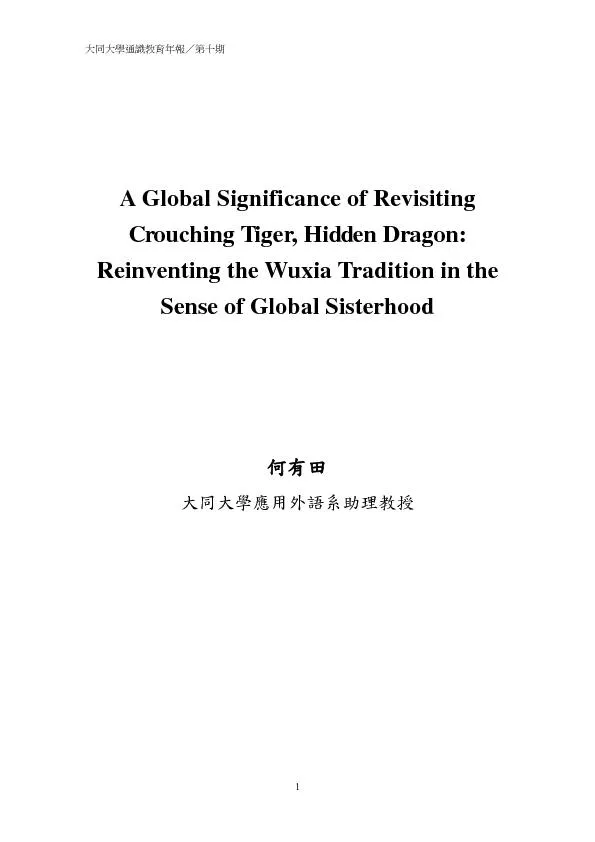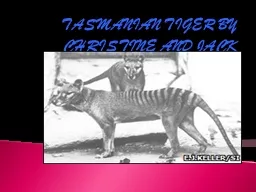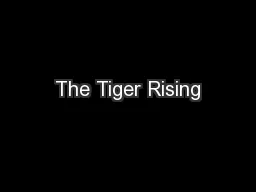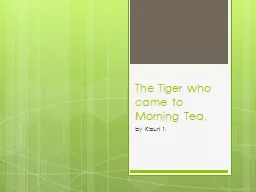PDF-A global significance of revisiting crouching tiger hidden dragon
Author : faustina-dinatale | Published Date : 2017-04-01
1 A Global Significance of Revisiting Crouching Tiger Hidden Dragon Reinventing the Wuxia Tradition in the Sense of Global Sisterhood x4F55x6709x7530 x5927x540Cx5927x5B78x
Presentation Embed Code
Download Presentation
Download Presentation The PPT/PDF document "A global significance of revisiting crou..." is the property of its rightful owner. Permission is granted to download and print the materials on this website for personal, non-commercial use only, and to display it on your personal computer provided you do not modify the materials and that you retain all copyright notices contained in the materials. By downloading content from our website, you accept the terms of this agreement.
A global significance of revisiting crouching tiger hidden dragon: Transcript
Download Rules Of Document
"A global significance of revisiting crouching tiger hidden dragon"The content belongs to its owner. You may download and print it for personal use, without modification, and keep all copyright notices. By downloading, you agree to these terms.
Related Documents














